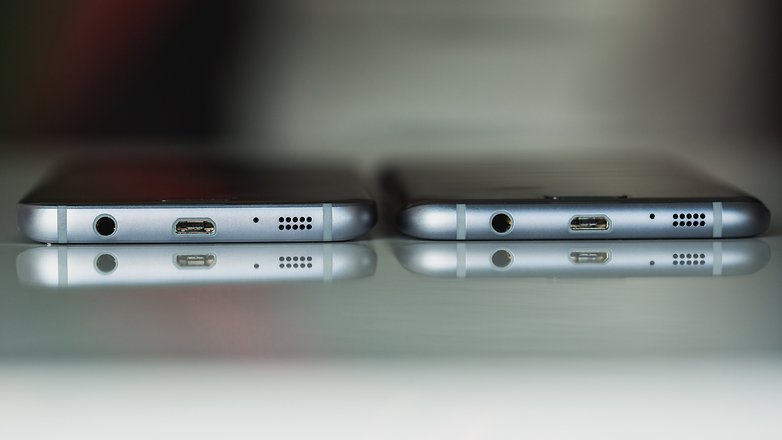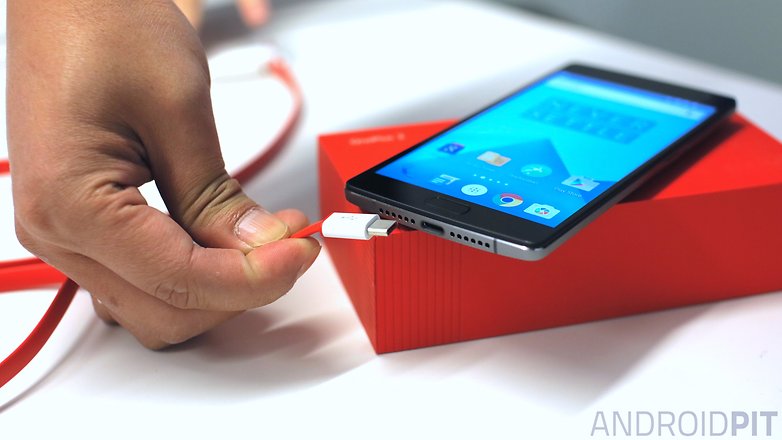USB Type-C: everything you need to know

USB Type-C isn't exactly a new concept to Android fans but there are some who are still in the dark regarding this tech. In this article, we explain what USB Type-C is, what it does, and some best practices for using it.
What is USB Type-C?
USB (Universal Serial Bus) is a cable standard that allows data and power to be passed between electronic devices. It first arrived in 1998 and has since gone through several iterations, the latest of which is USB Type-C.
Each USB version has a data transfer rate and a limit on how much electric current can be passed through it. The previous USB Type-A and Type-B connectors only have four pins, but USB Type-C has 24, providing more power and a higher data transfer rate.

Micro-USB 2.0, for example, which is currently found on most Android smartphones, supports 5V (volts) / 2A (amps) of power and a 480 Mbit/s data transfer rate.
USB 3.1 Type-C, on the other hand, reaches 20V / 5A of power with a transmission rate of up to 10 Gbit/s.

What are the advantages of USB Type-C?
The advantages of having a new standard are clear in terms of power and data transfer, but Type-C has several other useful features. The USB Type-C connector is reversible, meaning it will work no matter the orientation in which you plug it in, and it features an identical pin at either end.
More power, speed, reversibility and the same pin at both ends: what's not to like?
What's more, the next generation of HDMI is compatible with USB Type-C, meaning there is no need for a separate dongle to send this high-definition audio/visual data. In the future, laptops will no doubt completely adopt USB Type-C too.
What are the disadvantages of USB Type-C?
Dangerous Type-C cables with a USB 2.0 standard
Not all manufacturers are adjusting to the new USB standard. Some cables have a USB Type-C connector – they look like USB Type-C – but they only meet the USB 2.0 standard, which is a dangerous practice and could damage your smartphone.
If you do need to buy a Type-C cable for your handset, you may want to purchase one from your device manufacturer for the time being.

It is not yet very common and it's a bit pricey
Another big problem facing USB Type-C, be it an inherent one, is the number of devices that use it. At the moment, few devices house the tech, and if you're at a mate's house and need to charge your Nexus 5X, good luck finding a cable. The other downside is that quality cables and USB Type-C chargers tend to be expensive.
Tips for using USB Type-C
- Beware of cheap USB Type-C cables, they could harm your phone (or yourself)
- Even if a smartphone has USB Type-C, it may not support the USB 3.1 standard, make sure you find out if it does before purchasing
- Always use the cable supplied with your USB Type-C device
Have more questions about USB Type-C? Hit us up in the comments.




I personnaly was waiting for the micro USB to be replaced, it feel flimsy and outdated compared to Lightning cables from Apple, USB-C is the non-Apple Lightning connector. Would not even consider buyi^ng a phone without USB-C, plus you can find a lot of super cheap high quality USB-C cables on Geekshoppping or AliExpress
My honor 8 use eseekgo type c cable to charge fast and just need 1 hours to get full.
amazon.com/ESEEKGO-Charger-Dirtproof-Braided-Charging/dp/B01IR75Y3U/ref=sr_1_1?m=A2PQ5VQHSRWEC5&s=merchant-items&ie=UTF8&qid=1479872903&sr=1-1&refinements=p_4%3AESeekGo
that can be the next connector
Amazon had them on sale @$20 reg.$35. I don't know what it runs anywhere else, I bought my Nextbit Robin there and it wasn't included. My LG 5G's final push selling pt was the Type C USB, its really a preference that takes hold then and there in 1st use. It's not Apples & Oranges, it's Camery's & Camaro's...
Although my Note 4 is my main driver (no Samsung replacement yet) the 950 XL I use occasionally literally blasts when it comes to data transfer amongst other things, way to go 😊
Better than the old connector.
absolutely yes
that What I'd like to know and I've never seen much written about this is: 1. Why is the USB port still the weakest link in mobile phones. Batteries get talked about and how they can be a performance drag, but the USB ports have more issues and break so easily. How come nothing is being done to change this standard? And 2. There has to be a different method to charge the power source of a smartphone. Why is it that the one cable that gets plugged into the phone many times a day is so fragile and prone to breakage. Surely there is a way to secure them better?
Go to ifixit and look at phone tear downs. To streamline the phones edges and overall thickness, they use detached ports. If you're willing to accept more thickness for robust port mounting, then tell your preferred manufacturer.
Really useful, good read:)